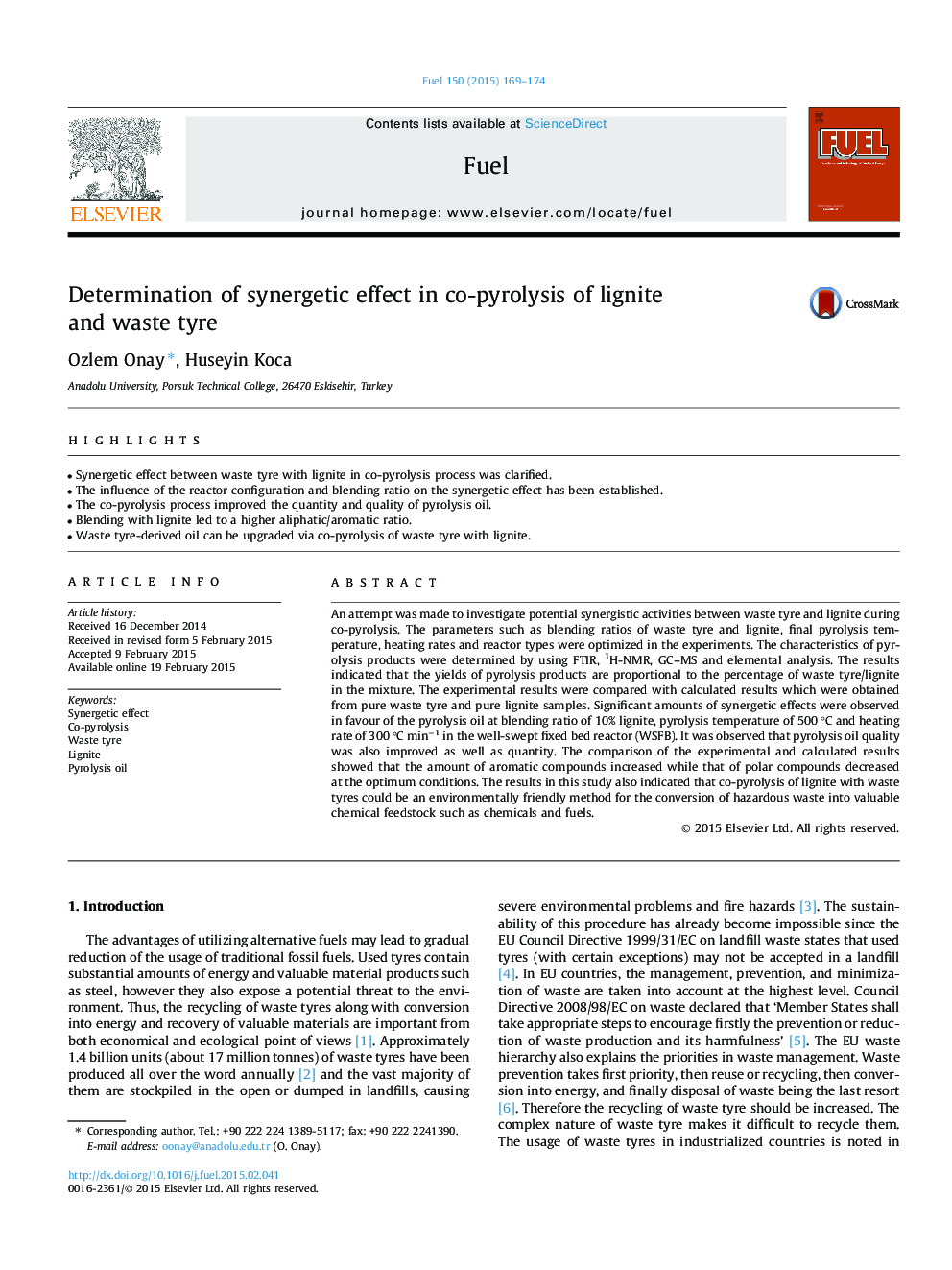| کد مقاله | کد نشریه | سال انتشار | مقاله انگلیسی | نسخه تمام متن |
|---|---|---|---|---|
| 205698 | 461123 | 2015 | 6 صفحه PDF | دانلود رایگان |
• Synergetic effect between waste tyre with lignite in co-pyrolysis process was clarified.
• The influence of the reactor configuration and blending ratio on the synergetic effect has been established.
• The co-pyrolysis process improved the quantity and quality of pyrolysis oil.
• Blending with lignite led to a higher aliphatic/aromatic ratio.
• Waste tyre-derived oil can be upgraded via co-pyrolysis of waste tyre with lignite.
An attempt was made to investigate potential synergistic activities between waste tyre and lignite during co-pyrolysis. The parameters such as blending ratios of waste tyre and lignite, final pyrolysis temperature, heating rates and reactor types were optimized in the experiments. The characteristics of pyrolysis products were determined by using FTIR, 1H-NMR, GC–MS and elemental analysis. The results indicated that the yields of pyrolysis products are proportional to the percentage of waste tyre/lignite in the mixture. The experimental results were compared with calculated results which were obtained from pure waste tyre and pure lignite samples. Significant amounts of synergetic effects were observed in favour of the pyrolysis oil at blending ratio of 10% lignite, pyrolysis temperature of 500 °C and heating rate of 300 °C min−1 in the well-swept fixed bed reactor (WSFB). It was observed that pyrolysis oil quality was also improved as well as quantity. The comparison of the experimental and calculated results showed that the amount of aromatic compounds increased while that of polar compounds decreased at the optimum conditions. The results in this study also indicated that co-pyrolysis of lignite with waste tyres could be an environmentally friendly method for the conversion of hazardous waste into valuable chemical feedstock such as chemicals and fuels.
Journal: Fuel - Volume 150, 15 June 2015, Pages 169–174
